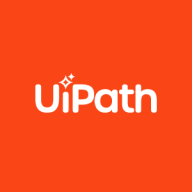

Automic Automation and UiPath Orchestrator are strong competitors in the automation software market. While Automic offers versatility with broad platform integration, UiPath is recognized for its user-friendliness and robust reporting capabilities.
Features: Automic Automation provides robust integration across multiple OS platforms and applications, supports real-time notifications, advanced scripting capabilities, and comprehensive auditing. UiPath Orchestrator is known for its effective scheduling, centralized logging, and a user-friendly interface that enhances error tracking and reporting.
Room for Improvement: Automic Automation could enhance its reporting facilities, manage dependencies better, and improve stability given its High Availability infrastructure. Additionally, support for DevOps practices and cloud adoption needs refinement. UiPath Orchestrator should improve exception handling automation, enhance its UI for improved user-friendliness, and integrate more AI capabilities alongside better queue management.
Ease of Deployment and Customer Service: Automic Automation is utilized across Hybrid, Public, and Private Clouds with strong on-premises support, albeit its customer service may vary due to outsourcing. UiPath Orchestrator mainly operates in Public and On-premises Cloud settings, providing reliable technical support highly rated by users.
Pricing and ROI: Automic Automation's server-based pricing can be costly for smaller organizations, though the ROI from automation efficiencies is notable. UiPath Orchestrator, known for high licensing and support costs, often presents a financial consideration despite its functionality. Both products impact productivity and efficiency, with pricing influencing organizational decisions.
Automic Automation has helped reduce workload failure rates by fifty percent.
The impact of UiPath Orchestrator's analytics on the decision-making process is important because it shortens the decision-making time, which helps customers.
They react quickly when it is urgent.
They are highly knowledgeable in their product area and very easy to work with.
If you put the tickets in for which you need help right away, they get back to you right away.
Their support teams are not sufficiently qualified to support us in our needs.
It's on the better side, but still has room for improvement in the speed of response.
We have small clients running a thousand tasks per day and big enterprises running one million or two million tasks per day.
The solution effectively supports our existing user base and is equipped to scale further.
It does not perform real-time scalability in our environment, but because of the way we have built it, it can scale well past any thresholds with no issues.
The solution's flexibility in integration and scheduling across different environments suggests good scalability.
The stability of the solution is excellent.
In a well-tuned environment, it runs very smoothly.
So far, I have not encountered any issues related to instability such as lagging, crashing, or downtime.
The solution is stable and integrated well with other systems.
It does not work as well for activities that require real-time input/output, but it works very well for batch, ETL, or similar cases.
Pricing is a major issue for some clients due to changes in Broadcom's pricing model, causing some to seek alternative solutions.
A feature that provides a dependency chart or tree diagram would be very helpful.
I would prefer if the tool was more intuitive and it is important to maintain simplicity instead of combining multiple functionalities, potentially through different licensing models to restrict features.
I am interested in seeing more features like document understanding and AI integration.
The major issue is with the application according to the new version of the UI.
Broadcom decided to change the way of licensing by moving to the number of jobs runs and then they say that clients have to pay three million because they run one million jobs per day.
Due to the increased pricing, some of them are thinking of reducing tasks in Automic to have fewer executions.
The pricing has been increasing significantly over the years, raising operational costs instead of reducing them.
The pricing of UiPath Orchestrator is a bit high.
Regarding licensing costs and setup costs, the pricing is on the higher side compared to other RPA solutions that are entering the market, which are much cheaper, and sometimes we cannot retain customers because of this.
It would be beneficial for UiPath to further refine pricing, setup costs, and licensing by making their tool more intuitive and simplifying complex functionalities.
A standout feature is the comprehensive versioning, allowing easy rollback to previous states.
Designing workflows is made easier by the graphical user interface, simplifying complex tasks.
It supports high availability by operating multiple servers concurrently, which means users do not experience outages or the need to log in again, even if some servers are updated.
The centralized nature of UiPath Orchestrator provides a seamless experience for managing automation processes.
We use UiPath Orchestrator to connect with different applications, extract and analyze data by specific criteria, and send emails.
UiPath Orchestrator is considered the brain of the system.
| Product | Market Share (%) |
|---|---|
| Automic Automation | 7.9% |
| UiPath Orchestrator | 1.0% |
| Other | 91.1% |


| Company Size | Count |
|---|---|
| Small Business | 19 |
| Midsize Enterprise | 14 |
| Large Enterprise | 66 |
| Company Size | Count |
|---|---|
| Small Business | 8 |
| Midsize Enterprise | 7 |
| Large Enterprise | 20 |
Automic Automation offers a web-based GUI for high scalability and flexibility, integrating with platforms like SAP and Oracle. It promotes efficient process automation and supports multiple OS environments, benefiting diverse industries with its robust predictive capabilities.
Automic Automation facilitates process automation and workload management, providing valuable integration with applications like SAP and Oracle. It supports a wide range of operating systems and environments, enabling seamless workflow automation. It features a web-based interface accessible across devices, ensuring scalability and flexibility for complex job automation. Users find its predictive capabilities and platform support instrumental in enhancing operations, although improvements are noted in reporting, cloud integration, and documentation. Licensing and pricing structures also present room for optimization, along with workflow dependency management and smoother upgrade paths.
What are the key features of Automic Automation?Automic Automation sees implementation in industries like banking, finance, and telecommunications, where it automates ERP systems, schedules batch jobs, integrates workloads, and manages file transfers. By supporting SAP, Oracle, and ETL tasks, it aids efficiency and workload automation across varied environments including cloud and mainframe systems.
UiPath Orchestrator offers a centralized platform for managing robotic process automation tasks, featuring advanced scheduling, integration capabilities, and robust monitoring to enhance workflow efficiency across environments.
UiPath Orchestrator provides a comprehensive suite of tools for automating workflows, centralizing data management, and ensuring security compliance. Known for its ease of use, it helps businesses schedule robots, handle reports, and monitor logs centrally. It facilitates task deployment across diverse environments, simplifies document understanding, process automation, and provides insights into bot activities. While installation and complexity are areas for improvement, Orchestrator remains integral in sectors like finance, telecom, and healthcare.
What features does UiPath Orchestrator provide?Organizations leverage UiPath Orchestrator for automating workflows such as website processes and supply chain management. In industries like finance and healthcare, it is used for provisioning and data entry. It provides a framework to configure machines, create templates, and manage resources, driving efficiency and innovation.
We monitor all Workload Automation reviews to prevent fraudulent reviews and keep review quality high. We do not post reviews by company employees or direct competitors. We validate each review for authenticity via cross-reference with LinkedIn, and personal follow-up with the reviewer when necessary.